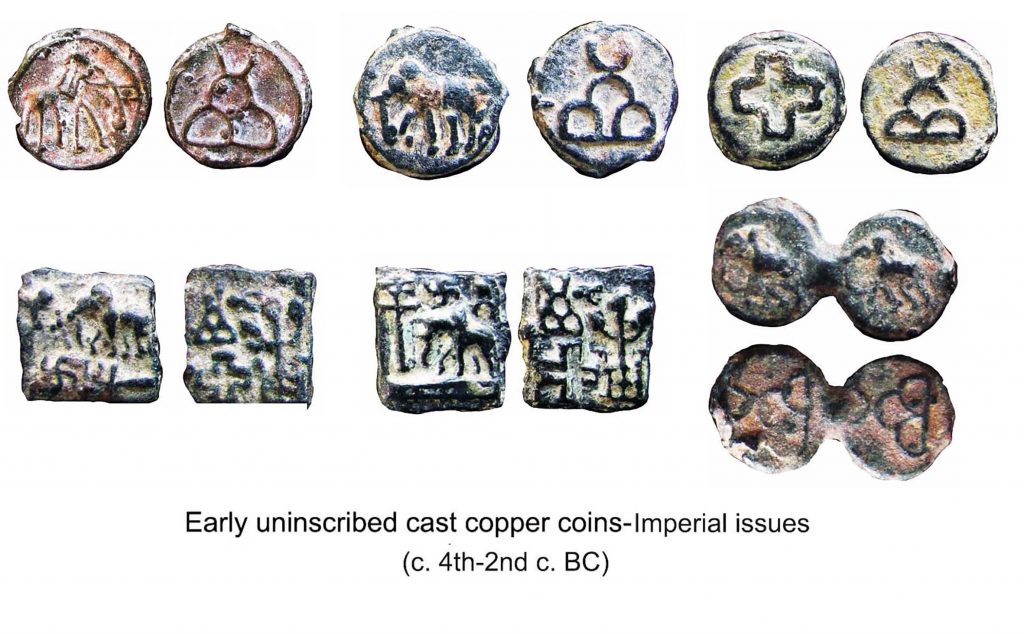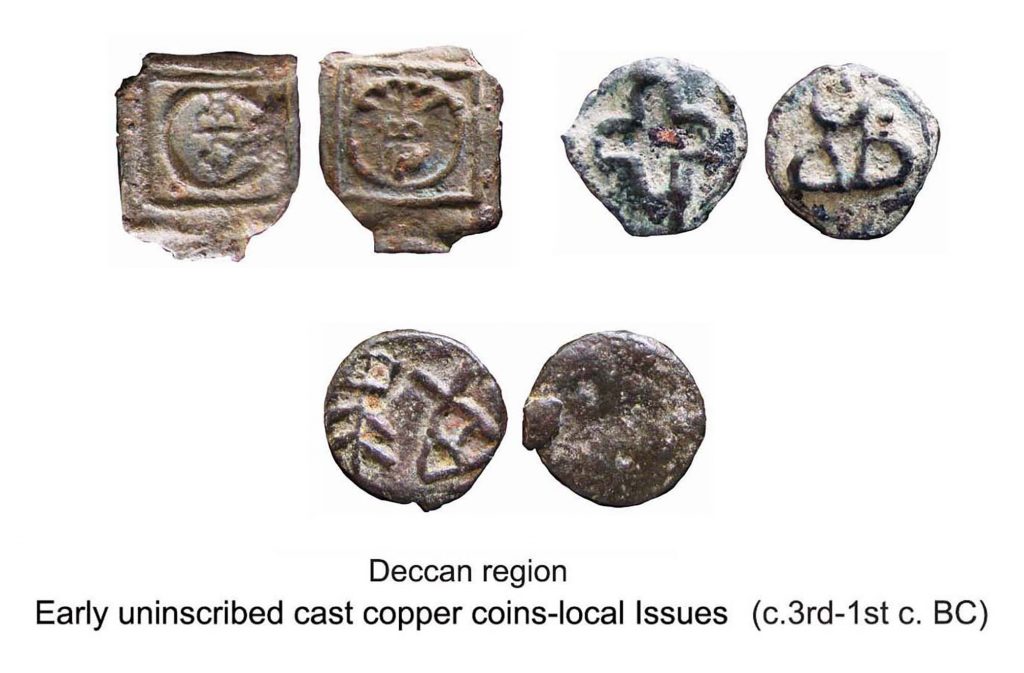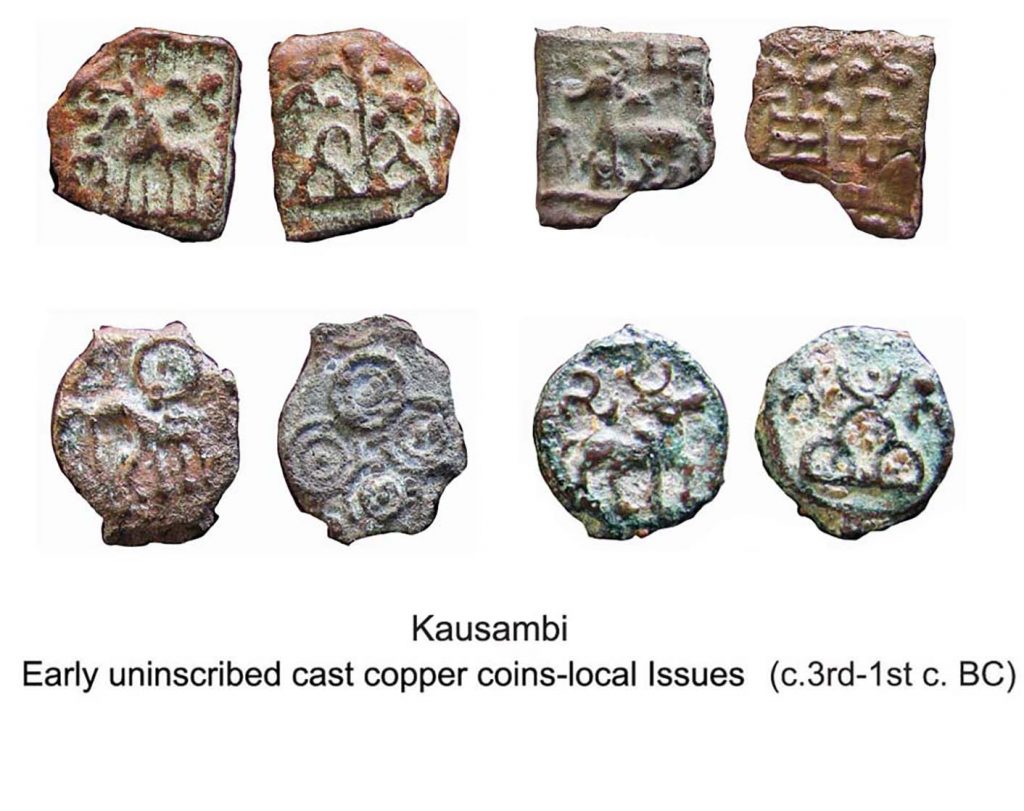Ever wonder why there was a demand for solid copper coins when silver punch-marked coins were already in circulation in ancient India? It’s the same reason we need the paisa, along with the rupee—for smaller-value, everyday transactions. The modern paisa’s counterpart in ancient times is what numismatists call early uninscribed cast copper (EUCC) coins.
EUCC coins are one of the most common coins of ancient India and they came in many varieties. EUCC coins have been found almost all over the Indian subcontinent, especially in present-day Karnataka, Telangana, Kerala and Andhra Pradesh. First issued around 500 BCE (during the era of the mahajanapadas) and circulated alongside silver punch-marked coins, they remained in circulation until around the 2nd Century CE, though their manufacturing had ceased much earlier, somewhere between the 1st Century BCE and the 1st Century AD. That was before the start of the Kushan period.
The symbols usually found on EUCC coins are the elephant, a hollow cross, the tree-in-railing and the three-arched hill with the crescent. Very few varieties can be described as representing the universal/imperial series.

The relatively less common coins of the universal category were round and bore symbols such as an elephant on the obverse and the three-arched hill with a crescent on the reverse. These are very simple in design. Sometimes two coins of this variety are found attached together with a small metallic band between them. It is not clear whether these were minted for circulation or were just aberrations.


EUCC coins of the local category came in specific varieties. For example, EUCC coins from Atiranjikhera (Uttar Pradesh) bore such symbols as the elephant, the standard (Indra-dhvaj), the swastika, the bull, the tree-in-railing, the hollow cross and the three-arched hill with crescent. Another local series from the Deccan had a three-arched hill with a crescent on top within a circle on the obverse, and a hollow cross inside a circle on the reverse.
The use of multiple molds used to produce coins in a batch commenced sometime between c. 300 BCE and 200 BCE. All in all, EUCC coins played a major role in low-denomination transactions for more than 600 years, 500 BCE to 100 CE.
